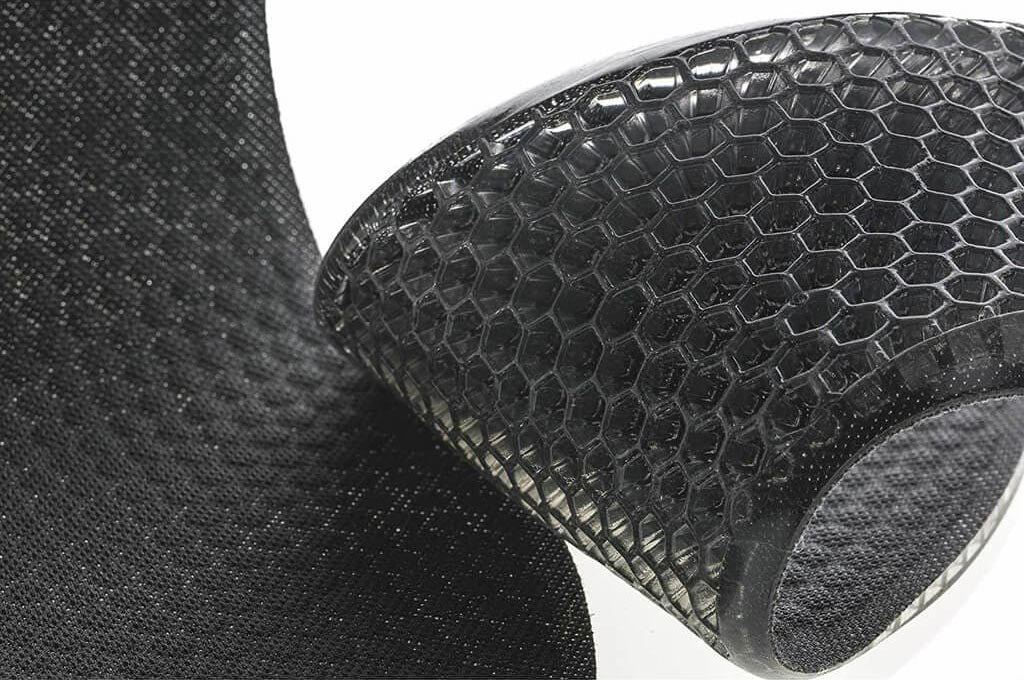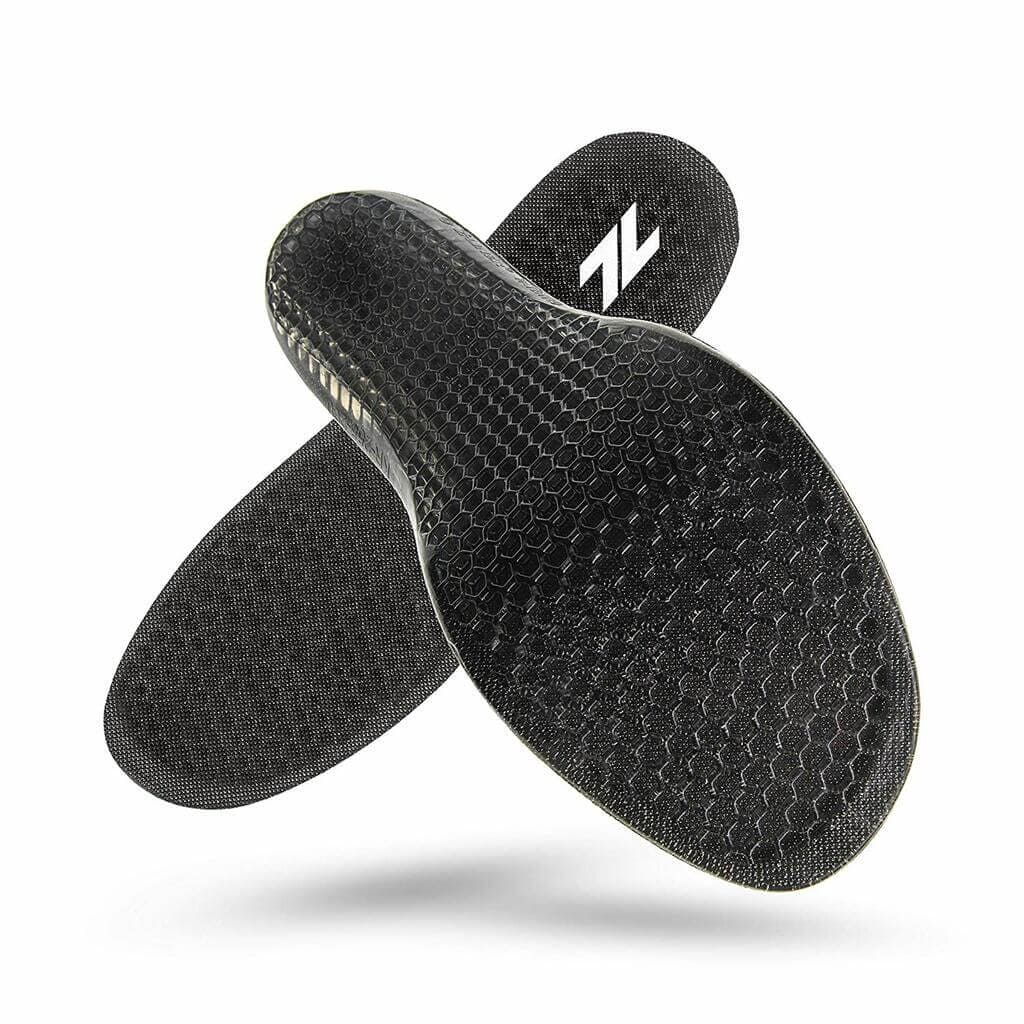What are Insoles? Everything You Need to Know

What are insoles? We answer all your burning questions in the only guide you'll ever need to shoe insoles and why you need them.
Insoles are important additions to footwear. They help make uncomfortable footwear comfortable and minimize the effects of certain activities' stress on the body—depending on the type of insole you intend to use.
In this article, we'll be sharing with you the different types of insoles, materials used, their purpose, and individual benefits to fill your needs.
We'll be answering all of the important questions and sharing personal insights along the way. You might also like to check out Z-Liner's very own as we have a great insole option for everyone.
So, let's dive in. Read on.
What are Insoles and When Do You Need Them?
Shoe insoles or shoe inserts are used to enhance the comfort, performance, and fit of the shoes. In other countries, insoles are commonly known as "inner soles" or "foot beds". Although using insoles doesn't necessarily reduce the original size of the shoes permanently, it's a cost-effective solution to help occupy the extra space between the foot and the inside of the shoes.
Insoles keep the inside of the shoes fresh since they can be removed and cleaned. Insoles can also be combined with toe inserts to provide extra support for the wearer when shoes are bigger than their actual foot size.
Benefits of using Insoles

There are plenty of reasons why people opt for insoles, but one of the more common reasons is to make the shoes feel tighter. However, insoles can also offer the following benefits:
1) Helps the shoes fit properly
Buying accurately-sized shoes is a common challenge, especially for people who need half sizes. Often, it's preferred to opt for a slightly larger shoe over something tighter and later add an inner sole to achieve a snug fit.
The proper insole for oversized shoes always varies depending on the wearer's preference. You can layer lightweight insoles to achieve the desired thickness and comfort.
2) Prevents painful blisters
A snug fit shoes reduce the risk of painful blisters. For wearers who have a loose-fitting pair of shoes, tighter footwear is less likely to rub against your skin, preventing irritation and discomfort.
3) Improves posture, and other long-term benefits
Insoles, especially orthotic insoles, can assist in correcting posture issues. These specialized insoles are custom-made to address problems affecting standing, walking, running, or even playing sports like golf. They do this by providing necessary arch support.
4) Enhance support and relieve pain
Orthotic insoles offer heel and arch support for people with certain conditions. Specialized insoles are beneficial if you wish to maintain proper foot alignment and reduce strain on joints. Orthotics can help minimize foot discomfort, ankles, knees, and lower parts of the back.
5) Shoes last longer
For practical wearers, insoles help absorb the impact of frequent footwear use and extend the life of the shoes, in and out.
Common Types of Insoles

Over the years, many insoles have been developed to solve common problems of using footwear. Today, there are 7 common types of insoles, and they're as follows:
1) Arch support insoles
Usually prescribed to people with foot shape problems. They help maintain the natural shape of the foot and improve the wearer's stability, posture, and comfort by distributing the pressure evenly on the legs, thighs, and back, further reducing pain in the arch area.
2) Cushioned insoles
Made from soft materials like gel, foam, or air cells. These materials are very soft and light to bring relief to the feet. The cushioning effect of this insole helps absorb shock and reduce foot fatigue and discomfort.
Cushioned insoles are most recommended for people who stand or walk for long periods.
3) Orthotic insoles
Custom-made insoles designed to correct abnormal foot mechanics and provide additional support. These are most beneficial for individuals with certain foot problems like plantar fasciitis, overpronation, or supination.
4) Heel cups and pads
Heel cups and pads are insoles that specifically target the heel area with extra padding and support. Commonly prescribed to patients who experience recurring heel pain, plantar fasciitis, and heel spurs. These insoles provide cushioning and reduce pressure on the heel.
5) Sport insoles
Designed for sports or any athletic activities. Sports insoles feature enhanced support, cushioning, and moisture-wicking properties to prevent unwanted odors on the feet. Commonly used by athletes and physically active individuals.
6) High heel inserts
High-heel inserts offer the same benefits as ordinary insoles for regular shoes, except this one is for high heels. Perfect for individuals who wear high heels, to reduce pressure on the ball of the foot and provide support to prevent foot pain and fatigue.
7) 3/4 Length insoles
3/4 length insoles cover only three-quarters of the shoe, typically providing arch and heel support without covering the toe area. These are commonly used in shoes with limited space or those with a tight toe box, they provide targeted support without crowding the toes.
What are Insoles Made From?
It depends on the purpose, personal preference, and durability, insoles can be made from different materials.
The most common, and probably the most familiar, are foam insoles. They're the cheapest and most widely used for its natural shock-absorbing properties and dependability. However, one major drawback of foam insoles is that they wear down quickly, requiring more frequent replacements.
Aside from regular foam, insoles are also typically made from memory foam (memory foam insoles are more expensive than regular foam insoles), gel, air-cushioned materials, and cowhide leather (leather insoles are the most durable).
Other insoles use more advanced materials. The Z-liner Insoles, for instance, are made from a top-quality, high-performance elastomer sourced from the United States. This choice gives you a durable and long-lasting option.
How Do You Find the Perfect Insoles For Your Feet?
When choosing the perfect insoles, consider your needs and your budget. Know exactly what it is that you need by consulting an expert.
Ask if there's any condition that needs resolving, provide the necessary information about the intensity of your activities that require you to wear shoes, and the type of shoes you wear, etc. Different activities and footwear require different levels of support and cushioning.
Finding the right pair of insoles
Having sufficient knowledge of your needs and understanding your foot type and pronation is important if you wish to find the "right pair" of insoles right away.
Example: Flat feet need strong arch support to prevent overpronation and high arches benefit from cushioned insoles, etc. Pronation, or how the foot rolls when you walk, also affects the type of insoles you need. Overpronation needs more stability, underpronation needs extra cushioning, and neutral pronation benefits from balanced support. Know these things first before you start searching and finalizing your decision to purchase an insole.
Begin with assessing your feet then research insoles that you can try—trying different types to find what feels best.
Do not forget to consult with professionals like podiatrists, orthopedic specialists, or physical therapists before purchasing anything as they can provide valuable insights and recommendations tailored to the specificity of your requirements.
DIY Insoles vs. Professional Insoles
The right insoles will significantly impact your comfort and foot health. Whether you opt for DIY insoles or professional custom orthotics, either comes with different benefits and drawbacks. What are the pros and cons of DIY insoles versus professional insoles?
DIY Insoles
DIY insoles are shoe inserts that you can buy from pharmacies, sports stores, and online.
Pros:
DIY insoles are very accessible to the public and cost-effective—as over-the-counter (OTC) options are much cheaper than custom insoles.
Cons:
OTC insoles offer limited customization since they are designed to fit a wide range of foot shapes and issues, which may not address specific problems and wear out faster than custom-made inserts. They may NOT provide enough support or relief for serious foot conditions and there's a high probability that it's not perfectly fit with all shoe types.
Professional Insoles (Custom Orthotics)
Pros:
Custom orthotics are personalized to fit the unique shape and needs of the patient's feet. They are created based on a detailed assessment by a professional, often including a gait analysis. These insoles are made from high-quality materials (more durable) and effectively support common medical conditions like plantar fasciitis, flat feet, or high arches.
Cons:
Custom orthotics can be expensive compared to DIY insoles. The process requires appointments, evaluations, and waiting time for the insoles to be made. Accessing these services may require visiting a specialist, which could be inconvenient or inaccessible for some people. Lastly, some users might need time to adjust to the custom insoles.
Frequently Asked Questions
We often receive these questions from our customers and readers. Here's a compilation of accumulated inquiries that we've answered as best as we can.
How do you clean insoles?
There's no general answer to this question as all insoles, or depending on the case, come in different materials. If the insoles are DIY, usually you'll find a care instruction in the packaging that it came with. On the other hand, if your insole is provided by a specialist or an Orthotist, care instructions and maintenance will be advised—otherwise, feel free to initiate an inquiry.
Can insoles help with Plantar Fasciitis?
Yes. Insoles, especially custom shoe orthotics, can improve a patient's plantar fasciitis on top of other treatments (if any).
What do insoles do?
Insoles help add support, correction, and protection to the foot. It does this by realigning the bones of the foot and encouraging optimum position for function. Alongside supportive footwear, insoles are also used to address foot and ankle pain and other common foot conditions.
Are there different types of insole?
Yes. There's a range of insoles and adaptations that customers can use to help all foot conditions. Typically, insoles fall into two categories, off-the-shelf (DIY) and custom. They can work to correct a foot position when you are wearing insoles to improve biomechanical function, or, accommodate a position where the foot cannot be corrected to reduce pressure and pain. We've explained this question in detail in the article above.
How do I know I need insoles?
If you are experiencing recurring foot, leg, or back pain then you may need insoles. Try contacting your GP first and they can refer you to the orthotic service which can further assist your case.
Where can I buy insoles from?
Insoles for specific foot conditions are readily available either through OTCs or through custom orthotics. Either way, try contacting your general physician first before purchasing one so you'll receive the proper assessment and guidance on which type of insole you need.
Z-Liner offers various options that you can check out here.

Final Thoughts
Investing in a professional evaluation and custom solutions is often the best approach for making sure that you receive optimal foot health and comfort. While DIY insoles offer affordability and convenience, they may not give the same personalized support and durability that custom orthotics can offer. Understanding your specific needs, foot type, and activity level is crucial in making the right choice. Purchase with this discretion in mind.
Z-liner, on the other hand, offers insoles for every individual need. By choosing the perfect insoles, experience enhanced comfort and support every day. Put on the best insole now and take the first step towards better foot health, click here to browse Z-liner products.

